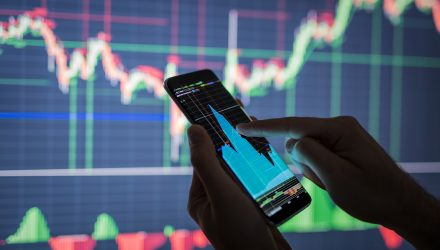This month has brought a jarring return to volatility for U.S. stocks, and along with it, a growing number of do-it-yourself investors trying to time the market despite its unpredictability. One factor investors have been keeping an especially close eye on is the buyback blackout period, which is now over for about half of the S&P 500, according to Goldman Sachs analysts.
Investors are Keeping Tabs on the Buyback Blackout Period
Unofficially, a company’s buyback blackout period generally lasts from the last two weeks of the quarter until after 48 hours it announces the quarter’s earnings results. However, this is hardly a firm rule because companies can set rules enabling them to buy back shares during the blackout period under certain conditions. There is also no federally-mandated requirement for such blackouts.
The high level of investor interest in the end of the buyback blackout period can be observed by simply looking at Google Trends data. Deutsche Bank strategist Pareg Thatte and team pointed this out in a recent note. A review of the Google Trends data for the keyword phrase “buyback blackout” reveals searches for that term soared to a new high this month. Investors remain riveted because searches for the term remain high.
Deutsche Bank estimated that last week, companies representing about $50 billion worth of share repurchases had already exited their buyback blackout period. The investment bank estimates that by the end of this week, that number leaps to $110 billion. By the end of next week, companies with approximately $145 billion in share repurchase authorizations will be out of their blackout periods.
Buyback Blackout Period Blamed for October Sell-Off
Multiple investment banks have noted recently that share repurchases have been driving the recent stock rallies. As a result, investors are keenly interested in pinpointing the end of the buyback blackout periods for the companies they own shares in because repurchases are expected to push stocks even higher.
October has been marked by much higher levels of volatility than what we have seen over the last couple of years. Quick glances at major U.S. stock indices like the S&P and Dow make it clear just how volatile U.S. equities have been. Over the last five days, we can see repeated spikes and falls only a day apart.
